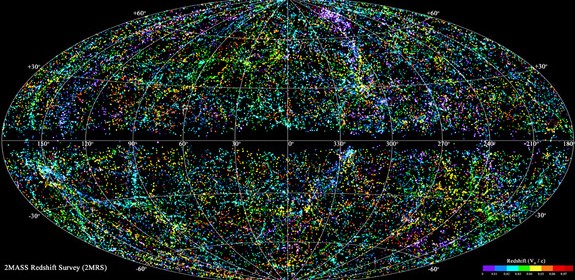Mapping the infant universe

The data suggests that the universe is as much as 100 million years older—and contains slightly more matter—than previously thought. “By matching observations from Planck to predictions from models, we can assemble a surprisingly detailed picture of the universe as it was one nano-nano-nano-nanosecond after the Big Bang,” Johns Hopkins University astronomer Marc Kamionkowski tells CNN.com.
In that first instant, scientists believe, a process called inflation caused the cosmos to expand 100 trillion trillion times, from subatomic size to the dimensions of a grapefruit. Since that first burst, the universe has continued to expand at a slower rate, known as the Hubble constant.
The new data from Planck revises the estimate of that rate significantly downward, and suggests that dark energy may be tugging at the cosmos in ways science can’t yet explain. A “new physics might be needed” to understand that and other irregularities the map has revealed, says Planck scientist George Efstathiou. “And that’s exciting.”

 Print
Print